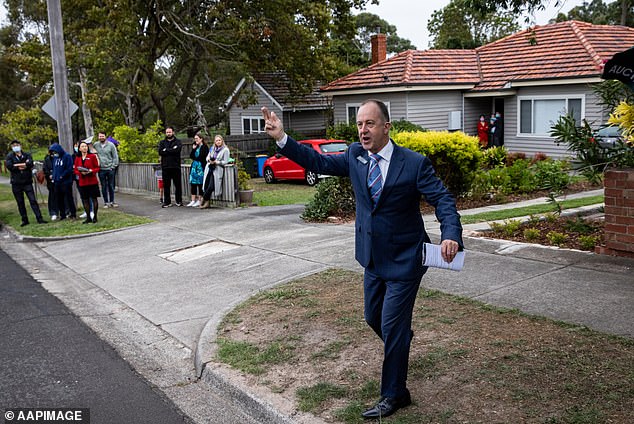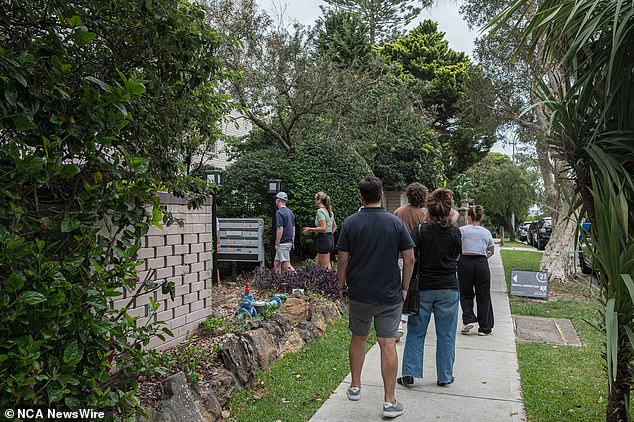Barefoot investor: Scott Pape weighs in on Australia’s ‘broken’ housing crisis and the one thing that’s likely to make it even worse
The Barefoot Investor has criticized rising immigration rates and questioned why Australia is welcoming record inflows amid a crippling housing crisis.
Scott Pape, in his weekly columnsaid Australia’s rental market is ‘fundamentally broken’ and rental affordability is ‘officially the worst it has ever been’.
“So a good question to ask our politicians would be: ‘Why are we currently bringing in 2,000 new migrants per day – 659,800 in the last year – while the rental market is in crisis?’” he wrote.
The author and financial expert told his readers he was “not anti-immigration” or “xenophobic” but added that the continued influx of foreign workers to boost economic growth would undoubtedly put further pressure on property markets.
The Barefoot investor fears rising immigration rates to Australia will only worsen the country’s crippling housing crisis
Rental vacancy rates in January hovered just above an all-time high of just 1.09 percent.
“Our politicians like to crow that we are the ‘lucky country’ that hasn’t had a recession in 34 years,” he wrote.
“So let’s look at how all this manufactured growth is affecting housing… The rental market in this country is fundamentally broken.
‘Yes, it takes more than just immigration to solve the housing crisis: there are tax breaks that favor investors, a real lack of supply and more social housing needs to be built.
“Yet the fact remains that, as things stand, overseas arrivals are outpacing new home construction at a rate of almost four to one.”
The Treasury has previously warned that the alternative to high immigration would be even higher income taxes as those over 70 will make up a larger share of the population in coming decades.
The Institute of Public Affairs, a libertarian think tank, calculated that 31 percent of Australia’s population is now born abroad – more than double the US 15 percent and the UK 14 percent.

The rental sector vacancy rate in January hovered just above an all-time high of just 1.09 percent (stock image)

A net of 518,000 migrants moved to Australia in the 2022-2023 financial year. This slowed to 447,790 at the end of last year
It is also significantly higher than Canada’s 21 percent and New Zealand’s 29 percent.
A net of 518,000 migrants moved to Australia in the 2022-2023 financial year. This slowed to 447,790 at the end of last year.
But before long-term departures were taken into account, almost 1.1 million foreigners moved to Australia on a permanent and long-term basis in 2023, Australian Bureau of Statistics data shows.
Both Deloitte Access Economics and Treasury expect overseas inflows into Australia, including skilled migrants and international students, to slow to 375,000 by 2023-2024.
This would still be almost double the pre-pandemic level of 194,400 in 2019-2020, before Australia went into lockdown from March 2020 to December 2021.
Prime Minister Anthony Albanese originally planned to return immigration numbers to pre-Covid-19 levels to strengthen the economy.
More recently, as new arrivals reached unsustainable levels, his government has pledged to halve immigration over the next two years.
